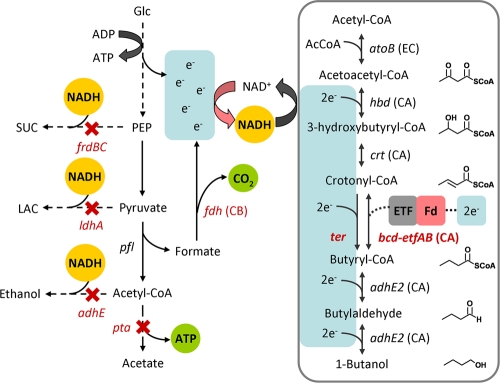Fig. 1.
Synthetic build-up of NADH and acetyl-CoA (shown on the left) in the 1-butanol production system. Shown on the right is the 1-butanol production pathway engineered in E. coli from C. acetobutylicum (boxed). Acetyl-CoA initiates the NADH-consuming reactions. A total of four NADH molecules is needed to make one 1-butanol molecule. Enzymes that utilize NADH directly as the electron donor (Ter) are coupled more tightly to the NADH driving force than the enzymes that require additional electron transfer mediators (Bcd). Elimination of Pta, involved in acetate production, not only increased the pools of available acetyl-CoA but also reduced ATP synthesis, both of which can be used as driving forces to increase 1-butanol production. SUC, succinate; PEP, phosphoenolpyruvate; LAC, lactate; ETF, electron transfer flavoprotein; Fd, ferrodoxin. CB, C. boidinii; CA, C. acetobutylicum; EC, E. coli.

